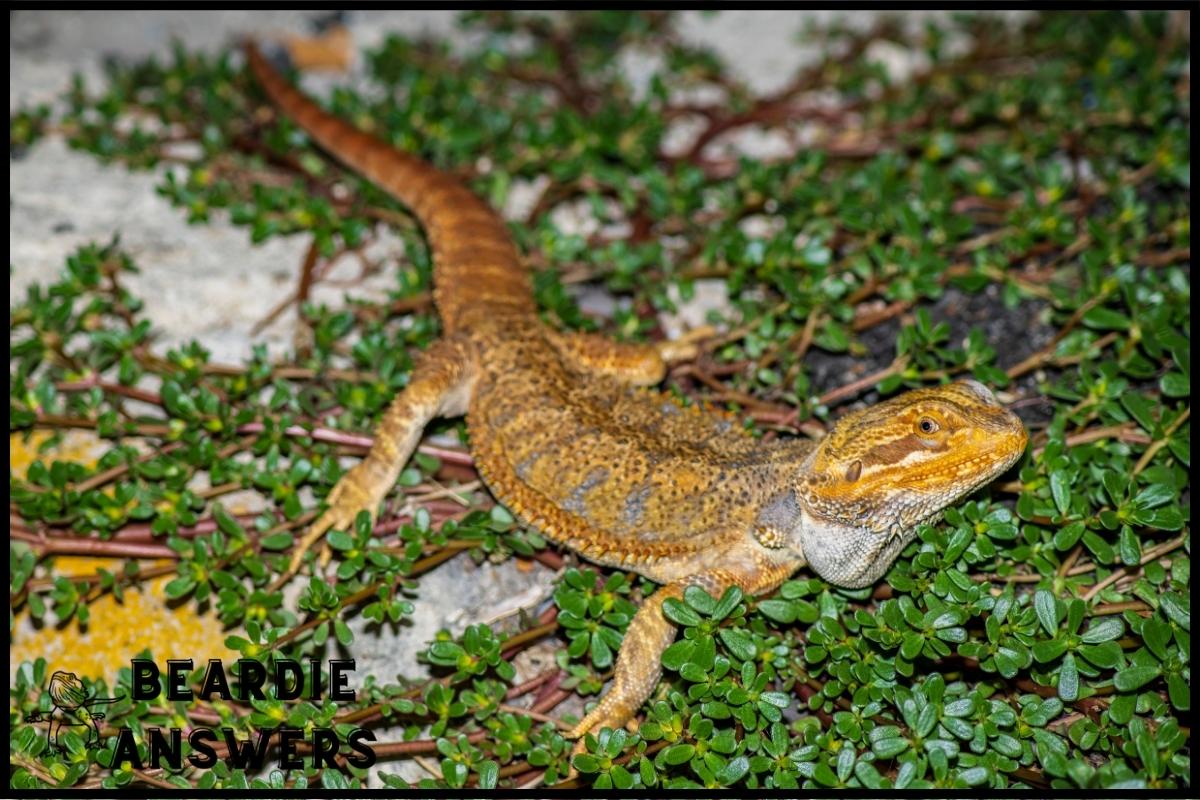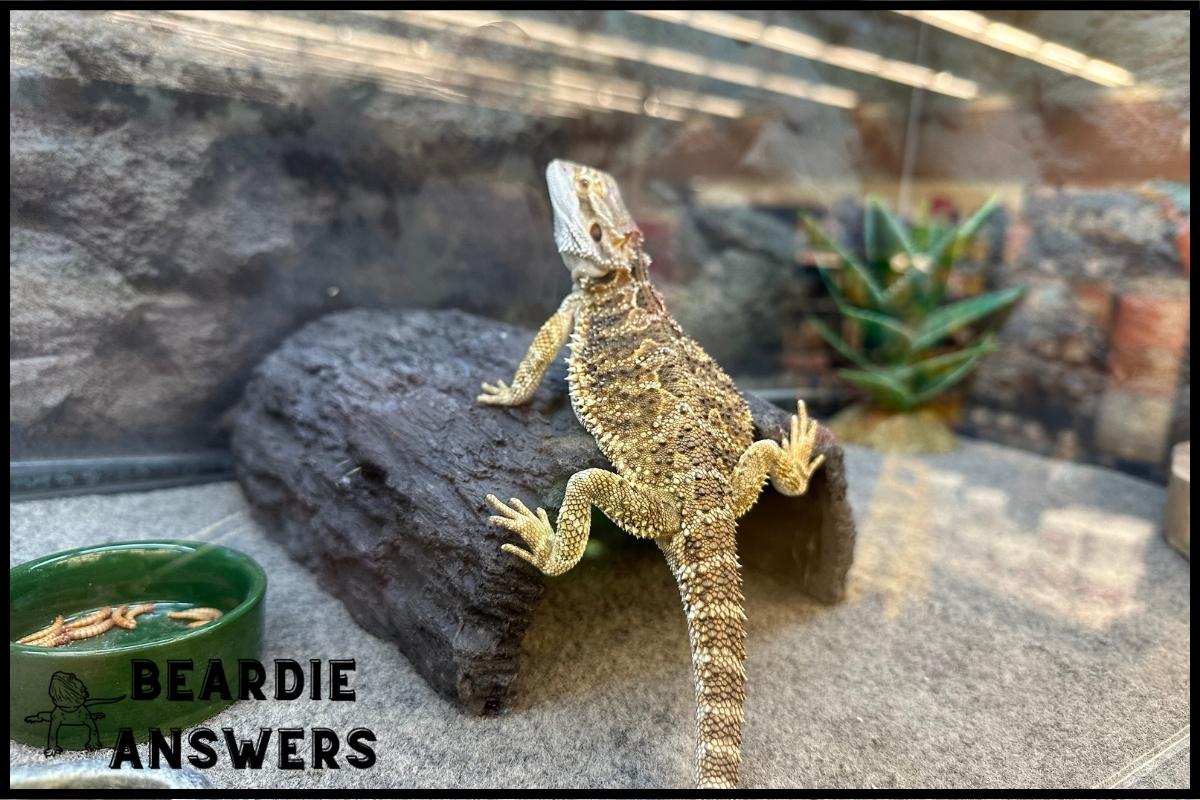MBD, or metabolic bone disease, is a common condition that affects bearded dragons. Early signs of MBD in bearded dragons include lethargy, lack of appetite, and difficulty moving. As the disease progresses, affected reptiles may experience deformities in their bones, causing them to become brittle and prone to fractures. It’s essential to provide adequate UVB lighting and a balanced diet rich in calcium to prevent MBD in bearded dragons.
What You'll Learn
What Is MBD?
Metabolic Bone Disease (MBD) is something that no bearded dragon owner should ever have to encounter. It’s a devastating and life-threatening condition that can be caused by numerous issues, including vitamin deficiencies and metabolic disorders.
Left untreated, MBD will put your beloved pet at risk of severe pain, disability, or even death.
The good news is that early signs of mbd in bearded dragons are often quite easy to identify if you know what to look out for. Common symptoms include lethargy, lack of appetite, and difficulty moving around – all of which can indicate the onset of MBD.
If these warning signs start appearing in your own pet beardie then it’s important to seek medical advice immediately. A prompt diagnosis and treatment plan could mean the difference between health and suffering for your reptile friend, so don’t ignore any potential red flags!
What Are The Early Signs Of MBD In Bearded Dragons?
Early signs of MBD in bearded dragons can easily be overlooked, as they often appear to be normal behavior. Lethargy and a lack of appetite are two common indicators that something is wrong.
Difficulty moving may also occur due to calcium deficiencies caused by improper dietary changes or exposure to inadequate UV lighting. Signs such as tremors, jerky movements, twitching muscles, and paralysis are more severe indications of MBD.
Knowing these early warning signs can help owners diagnose the condition before it becomes worse for their pet beardie. With proper treatment and care, many cases of MBD are reversible; however, prompt action is essential.
It’s important to watch out for any change in your dragon’s behavior so that you can address the issue quickly if necessary. Transitioning into diagnosing MBD requires an understanding of both physical symptoms and laboratory tests used to confirm a diagnosis.
How To Diagnose MBD In Bearded Dragons
Bearded dragons suffering from MBD can be a heartbreaking sight. With the right knowledge and quick action, however, you can diagnose and help your beloved pet get back to their healthy self.
When diagnosing MBD in bearded dragons, there are several key signs to look out for:
- Lethargy
- Loss of appetite
- Difficulty moving
- Irregular bone growth or deformities
It’s important to take note of any dietary changes that may have caused the development of MBD as well as lighting adjustments made over time.
If any one or more of these symptoms present themselves, it is best to consult a veterinarian for further guidance on treatment options.
It is possible that with careful monitoring and appropriate diet modifications, your dragon can recover from this condition without needing medical intervention.
Having identified the early warning signs and potential causes of MBD in bearded dragons, it’s now time to explore what treatments are available for helping them get better again.
Treatment Options For MBD In Bearded Dragons
First, let’s talk about dietary changes – this is a key part of treating MBD in bearded dragons. We need to make sure they’re getting a varied and balanced diet, as well as plenty of calcium.
Next, let’s discuss vitamin supplementation. It’s important to supplement a bearded dragon’s diet with vitamins, as this can help address the deficiency causing the MBD.
Finally, light therapy can be a good way to treat MBD. The UVB rays from natural sunlight can help boost the bearded dragon’s calcium and vitamin D levels.
Dietary Changes
When treating MBD in a bearded dragon, dietary changes are of utmost importance. Supplementation strategies and specific dietary guidelines should be implemented to ensure the best possible health for the animal. Proper nutrition is key when trying to reverse any signs of metabolic bone disease – calcium supplementation, along with other vitamins and minerals like phosphorus, can help bring balance back into the diet.
Furthermore, ensuring that gut flora remain healthy by providing adequate amounts of fiber is also important for overall wellbeing. It’s not enough to just provide food; it must be nutritious in order to have an impact on MBD symptoms. With proper care and attention paid to their diet, bearded dragons can make a full recovery from this condition.
Vitamin Supplementation
Now that we’ve discussed the importance of diet modification, let’s look into vitamin supplementation as part of a treatment plan for MBD in bearded dragons.
Supplementing with calcium is essential to combatting a deficiency, and other vitamins like phosphorus can help bring balance back to their diets.
Additionally, ensuring gut flora remain healthy with enough dietary fiber will help support overall wellbeing.
Vitamin supplements should be given regularly to ensure optimal health and progress when treating MBD – it’s not just about changing what they eat but also making sure those changes are beneficial!
With the right combination of nutrition and care, these reptiles can make a full recovery from this condition.
Light Therapy
Light therapy is also a great way to help bearded dragons suffering from MBD.
Making sure they get adequate sunlight exposure can help boost their vitamin D levels, as well as promote better absorption of calcium and other nutrients through dietary changes.
This helps them maintain healthy bones and improves overall health.
As long as the dragon’s eyes are protected from direct sunlight, it should be safe for these reptiles to bask in natural light.
With all of these treatments combined, affected bearded dragons can find relief from MBD symptoms and live healthier lives!
Risks Of Not Treating MBD In Bearded Dragons
MBD (Metabolic Bone Disease) is a serious condition that can have long-term effects on bearded dragons if not treated promptly. Left untreated, MBD can cause bone fragility and even lead to kidney failure. It’s important for any pet owner to be aware of the risks of neglecting this disorder in their dragon.
The most severe consequence of leaving MBD unchecked is potential organ damage due to metabolic imbalances caused by lack of vitamins and minerals essential for healthy growth. This puts pressure on vital organs like the kidneys, leading to permanent damage over time. Even worse, there may be no visible symptoms until it’s too late for effective treatment – so prevention is key.
It’s also possible for your dragon’s bones to become more fragile as the disease progresses, likely resulting in broken bones or fractures from seemingly minor impacts which would normally go unnoticed with a healthier animal.
The longer you wait before seeking treatment, the harder it will be to reverse these physical changes and ensure your pet’s safety in the future. To protect them from such danger, preventive measures should always be taken at an early stage.
Prevention Of MBD In Bearded Dragons
As Bearded Dragons age, it is important to be aware of the potential for metabolic bone disease (MBD) and take preventative measures. MBD can create a life-threatening situation when left untreated and is often caused by improper nutrition and lack of sufficient UV exposure. Fortunately, there are steps that owners can take to reduce the risk of their pet developing this serious condition.
The most important factor in preventing MBD in bearded dragons is providing them with proper nutrition. This means avoiding overfeeding or feeding too much protein as well as ensuring that calcium levels are adequate without being excessive. The diet should also include plenty of dark leafy greens such as collard greens and turnip tops, which provide vitamins A & K along with other essential nutrients.
Another key component in preventing MBD is making sure that your dragon receives enough natural sunlight or ultraviolet (UV) exposure from an artificial light source designed specifically for reptiles. Exposure to UV rays helps ensure that they receive enough vitamin D3, which aids in calcium absorption and metabolism within their bodies. To maximize benefits, make sure your dragon’s enclosure has easy access to natural sunlight during the day – but never leave them outside unsupervised!
With these dietary changes and appropriate UV exposure, you can help keep your beloved companion healthy and active throughout its lifetime. Taking the necessary precautions will give you peace of mind while allowing your reptilian friend to enjoy a long life free from health problems related to MBD.
Conclusion
In conclusion, MBD in bearded dragons should not be taken lightly. It is a serious condition that, if left untreated, can have serious implications for your pet’s health and quality of life.
Therefore it is important to watch out for the early signs of MBD such as lethargy, lack of appetite and difficulty moving so you can seek prompt diagnosis and treatment from an experienced reptile veterinarian.
Preventing MBD through proper diet and UVB exposure is like putting on sunscreen before going outside; it may seem tedious at first but it will protect your beloved dragon from harm.
With some foresight and care, we can ensure our scaly friends stay healthy and happy for many years to come.

Hi! My name is Bryan, I am the “one behind the words” here are BeardieAnswers.com. I believe that providing quality care and nutrition is the best way to ensure the health of your pet. Every beardie is special and deserves the best care and attention. If you have questions about your bearded dragon, please don’t hesitate to ask! View My Full Author Page




